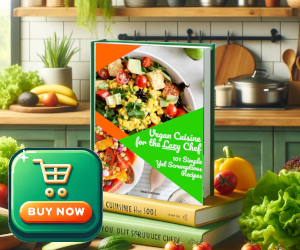
When it comes to home cooking, there’s a kind of alchemy that happens in a cast iron skillet. It’s where ingredients come together to create something greater than the sum of their parts. And when you pair this with the precision of an induction cooktop, you’re in for a culinary treat. If you’ve been hesitant to use your cast iron skillet on an induction cooktop, let me guide you through some delectable recipes that will make you a believer.
Article-at-a-Glance
-
Cast iron skillets are compatible with induction cooktops and can produce exceptional culinary results.
-
Choosing the right size and shape of cast iron skillet is crucial for successful cooking on induction surfaces.
-
Seasoning your cast iron skillet ensures a non-stick surface and enhances the flavor of your food.
-
Temperature control is key in induction cooking—start with lower heat and gradually increase as needed.
-
From pancakes to steaks and stir-fries, cast iron cooking on induction is versatile and rewarding.
Quick Start Guide to Cast Iron Cooking on Induction Cooktops

Why Cast Iron Works Wonders on Induction
Induction cooktops are marvels of modern cooking technology, offering precise temperature control and energy efficiency. They work by generating a magnetic field that directly heats your cookware. Because cast iron is magnetic, it’s a match made in culinary heaven. The even heat distribution of a cast iron skillet combined with the precision of induction cooking means that foods cook evenly and predictably, every time.
Choosing Your Skillet: Size and Shape Matter
Before we dive into the recipes, let’s talk skillets. Not all cast iron is created equal. For induction cooktops, you’ll want a skillet with a flat, smooth bottom to maximize contact with the cooktop. Size also matters. A 10-inch skillet is a good all-purpose choice, but if you’re cooking for a crowd, go bigger. If you love a good sear on your steak or crispy edges on your pancakes, a skillet with higher sides can help contain splatters.
Mastering the Basics
Seasoning Your Skillet for Induction Perfection

Seasoning is the secret sauce of cast iron cooking. It’s what gives your skillet that coveted non-stick surface and contributes to flavor over time. To season your skillet, start by washing it with warm, soapy water and drying it thoroughly. Then, apply a thin layer of vegetable oil or shortening all over the skillet. Place it upside down in a preheated oven at 375°F (190°C) and bake for an hour. Let it cool in the oven. This process creates a patina that gets better with each use.
Controlling the Heat: Tips for Temperature Adjustment
One of the joys of induction cooking is the control you have over the temperature. Start with a lower heat setting to warm up your cast iron slowly and prevent warping. Then, increase the heat as needed for cooking. Remember, cast iron holds heat well, so you often won’t need to go as high as you might think.
The Humble Pancake: A Cast Iron Classic

Let’s start with something simple: pancakes. They’re a breakfast staple and a great way to get acquainted with your cast iron skillet on an induction cooktop. The even heat ensures that each pancake comes out golden and fluffy.
Simple Ingredients for the Perfect Flapjack
-
1 cup all-purpose flour
-
2 tablespoons sugar
-
1 teaspoon baking powder
-
1/2 teaspoon baking soda
-
1/4 teaspoon salt
-
3/4 cup buttermilk
-
1 large egg
-
2 tablespoons unsalted butter, melted
In a bowl, whisk together the dry ingredients. In another bowl, beat the buttermilk and egg together, then mix in the melted butter. Pour the wet ingredients into the dry ingredients and stir until just combined. Let the batter rest for a few minutes—it’s key for the perfect pancake.
Golden Brown Every Time: Cooking Technique
Now, heat your skillet on the induction cooktop over medium heat. Brush the skillet with a little butter or oil. Pour a scoop of batter onto the skillet, and watch as it spreads into a perfect circle. The edges will start to bubble—this is your cue. Flip it over and cook until both sides are golden brown. Your pancakes will be light, fluffy, and ready to soak up a drizzle of maple syrup.
Searing Steaks to Perfection

Nothing quite compares to a perfectly seared steak with a crusty exterior and a juicy interior. Cast iron skillets are renowned for their searing capabilities, and when used on an induction cooktop, you can achieve steakhouse-quality results right at home.
Prepping Your Meat for Maximum Flavor
“A great sear starts with the prep,” they say, and it’s true. Here’s how to get your steak ready for the skillet:
-
Choose a steak at least 1 inch thick for the best sear.
-
Pat the steak dry with paper towels. Moisture is the enemy of a good sear.
-
Season generously with salt and pepper, or your favorite steak seasoning.
-
Let the steak come to room temperature for about 30 minutes before cooking.
These steps are crucial for that mouth-watering crust we all crave. The dry surface of the steak will react with the hot skillet to create a caramelized exterior, while the seasoning will enhance the natural flavors of the meat.
The Art of the Sear: Step-by-Step
Turn your induction cooktop to a high setting and let your cast iron skillet get smoking hot—literally. Add a high smoke point oil like canola or grapeseed to the skillet. Lay your steak in the center and listen for that satisfying sizzle. Cook it without moving for a few minutes until a crust forms. Flip it once, and let the other side develop a sear. For a medium-rare finish, aim for an internal temperature of 130°F (54°C). Let the steak rest for a few minutes before slicing against the grain. There you have it, a steak so good, it might just ruin restaurants for you.
Stir Fry: Bringing the Sizzle to Veggies

Stir-frying in a cast iron skillet on an induction cooktop is a game-changer. The high heat retention of cast iron is perfect for the quick cooking and constant movement of stir-fry.
First, gather all your ingredients. Stir-frying moves fast, so you’ll want everything chopped and within arm’s reach. Next, heat your skillet on a high setting. The right temperature can make or break a stir-fry. You want it hot enough to cook quickly, but not so hot that it burns.
-
Protein (chicken, beef, tofu)
-
Vegetables (bell peppers, broccoli, snap peas)
-
Sauce (soy sauce, oyster sauce, hoisin sauce)
-
Aromatics (garlic, ginger, green onions)
-
Oil with a high smoke point (peanut, vegetable)
Add your protein to the skillet with a little oil and cook until it’s just done. Remove it and set it aside. Add your vegetables and stir frequently until they’re brightly colored and tender-crisp. Add your protein back in, pour in your sauce, and toss everything together until it’s well coated and heated through. Serve it up with some steamed rice or noodles for a quick, healthy meal that’s packed with flavor.
Chop and Prep: Vegetable Preparation for Quick Cooking

When it comes to stir-frying, your knife skills are almost as important as your cooking skills. Vegetables should be sliced uniformly to ensure they cook at the same rate. Here’s a quick rundown:
-
Bell peppers: Slice into thin, even strips.
-
Broccoli: Cut into bite-sized florets.
-
Snap peas: Trim the ends and pull off the stringy seam.
Once everything is chopped, arrange it on a tray or plate in the order it will go into the skillet. This will help you stay organized and efficient once the heat is on.
Firing Up the Flavor: Stir Fry in Minutes
-
Heat your skillet until it’s very hot.
-
Add a small amount of oil and swirl it around to coat the bottom.
-
Add your protein and cook until browned. Remove and set aside.
-
Add more oil if needed, then toss in your vegetables.
-
Stir constantly for even cooking and to prevent burning.
-
When the veggies are just about done, add the protein back in along with the sauce.
-
Stir everything together until the sauce is bubbling and everything is coated.
-
Taste and adjust seasoning, then serve immediately.
That’s it! In a matter of minutes, you’ve created a stir-fry that’s bursting with flavor and freshness. It’s a testament to the versatility of your cast iron skillet on an induction cooktop.
Caring for Your Cast Iron Post-Dessert
After you’ve indulged in a treat baked in your cast iron skillet, don’t forget the most crucial step: cleaning and maintaining your skillet. While it’s still warm, wipe out any leftover bits with a paper towel. If needed, use a little water to loosen any stuck-on food, but avoid using soap, which can strip the seasoning. Dry the skillet thoroughly; moisture is the enemy of cast iron as it can lead to rust. Finally, apply a thin layer of oil before storing to keep the seasoning intact and ready for your next cooking adventure.
Frequently Asked Questions
Can All Cast Iron Skillets Be Used on Induction Cooktops?
Absolutely! As long as your cast iron skillet has a flat and smooth bottom, it’s suitable for an induction cooktop. The magnetic nature of cast iron makes it an ideal choice for induction cooking. However, ensure your skillet is free of any debris or burrs on the bottom that could scratch the cooktop surface.
How Do I Avoid Scratching My Induction Cooktop with Cast Iron?
Scratches are a common concern with induction cooktops, but with a little care, you can keep your cooktop looking pristine. Always lift your cast iron skillet instead of sliding it across the cooktop. Keep the bottom of your skillet clean and smooth, and consider using a paper towel or a silicone mat under the skillet if you’re particularly concerned about scratches.
What’s the Best Oil to Season a Cast Iron Skillet for Induction Cooking?
The best oil for seasoning cast iron is one with a high smoke point, such as canola, vegetable, or grapeseed oil. These oils can withstand the high temperatures needed to create a durable seasoning layer without burning off. Apply a thin, even layer to prevent a sticky surface, and remember, the more you cook with your skillet, the better the seasoning will become.
Can I Cook Acidic Foods in My Cast Iron on Induction?
You can cook acidic foods in your cast iron skillet, but with caution. If your skillet is well-seasoned, it can handle the occasional tomato sauce or wine reduction. However, prolonged cooking of acidic foods can weaken the seasoning, so it’s best to avoid making it a regular practice. If you do cook acidic foods, give your skillet a little extra care by re-seasoning it afterward.
How Should I Store My Cast Iron Skillet When It’s Not in Use?
Proper storage is key to the longevity of your cast iron skillet. Always store it in a dry place. If you’re stacking skillets or other pans on top of it, place a paper towel or a piece of cloth between them to protect the seasoning. If you live in a humid climate, consider giving the skillet a quick heat on the stove every now and then to drive off any moisture and prevent rust.

